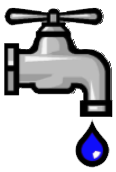
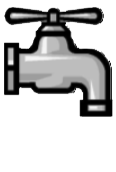
28 October 2022
The purpose of this lab is to give you practice:
This lab can be completed in pairs!
If you choose to work in a pair, you’ll make a single code file which you’ll upload to Gradescope with both your names.
We would like to write a program that represents pipelines, as you might do if you were building a computer model of real-world infrastructure – or if you were making a game like SimCity!
A pipeline has
| faucet open | faucet closed |
|---|---|
 |
 |
| one straight pipe leading to a faucet | two straight pipes leading to a faucet |
|---|---|
 |
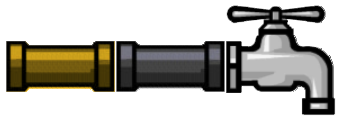 |
| pipeline with one branch | pipeline with several branches |
|---|---|
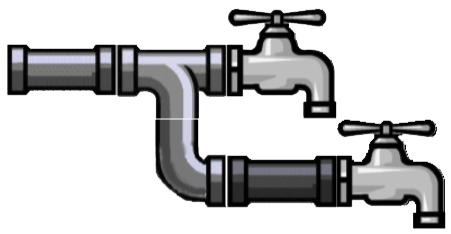 |
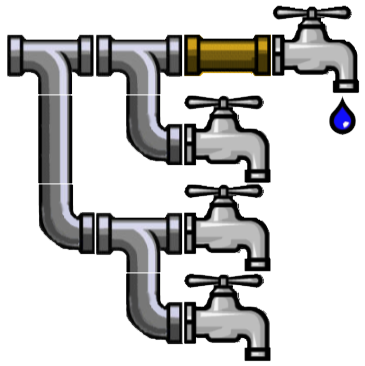 |
We can represent pipelines as described above with the appropriate data definition. Since our pipelines consist of multiple instances of faucets, straight pipes, and branches, our data definition includes these three varieties.
Task: Copy the following data definitions and examples into your lab07.arr file.
dataPipeline: | faucet(is-open :: Boolean) | straight(kind :: Metal, pl :: Pipeline) | branch(pl1 :: Pipeline, pl2 :: Pipeline)enddataMetal: | lead | copperend# # Example pipelines #f-closed = faucet(false) f-open = faucet(true) straight-c = straight(copper, f-closed) straight-c-l = straight(copper, straight(lead, f-closed)) branching-pipeline = branch( branch( straight(copper, f-open), f-closed), branch( f-closed, f-closed))
Since we defined a new type of data (Pipeline), it’s a good idea to write a template we can use for functions that take that data as input.
Task: Copy this template into your lab07.arr file:
#|
fun pipeline-fun(pl :: Pipeline) -> ...:
doc: "Template for a function that takes a pipeline"
cases (Pipeline) pl:
| faucet(is-open) =>
... is-open ...
| straight(kind, pl1) =>
... kind ...
... pipeline-fun(pl1) ...
| branch(pl1, pl2) =>
... pipeline-fun(pl1) ...
... pipeline-fun(pl2) ...
end
where:
pipeline-fun(...) is ...
end
|#
#
# Exercise 1
#
#
# Exercise 2
#
#
# Exercise 3
#
#
# Exercise 4
#
#
# Exercise 5
#
Task: Implement the function is-water-running, which takes a Pipeline and determines whether any faucets are open.
To help you get started with the lab, we’ve done this one for you!
# # Exercise 1 #funis-water-running(pl :: Pipeline) -> Boolean:doc:"Determine whether any faucets are open in pl"cases(Pipeline) pl: | faucet(is-open) => is-open | straight(kind, pl1) => is-water-running(pl1) | branch(pl1, pl2) => is-water-running(pl1)oris-water-running(pl2)endwhere: is-water-running(f-open)istrueis-water-running(f-closed)isfalseis-water-running(straight-c)isfalseis-water-running(straight-c-l)isfalseis-water-running(branching-pipeline)istrueend
Copy and paste it into your lab07.arr file. Make sure you understand how this function works – how did we write this based on the template above?
Task: Why do we have so many examples for this function? Since it’s a predicate (a function returning a Boolean), why isn’t it enough to have one true example and one false example? Put your answer in a comment.
Task: Implement the function count-faucets, which takes a Pipeline and counts the number of faucets it contains.
To do this,
...) in the template with appropriate code.Task: Implement the function count-open, which takes a Pipeline and counts the number of open (that is, running) faucets.
Follow the same steps!
Task: Implement the function modernize, which takes a Pipeline and converts all the (straight) lead pipes to copper ones.
Hint: You don’t need an if to do this!
Task: Implement the function off, which takes a Pipeline and turns off all the faucets.
When you’ve completed the exercises, show your code to your instructor or one of the coaches.
Then upload your lab07.arr file to the Lab 7 assignment on Gradescope.
This lab includes material adapted from Marc Smith, Vassar College.